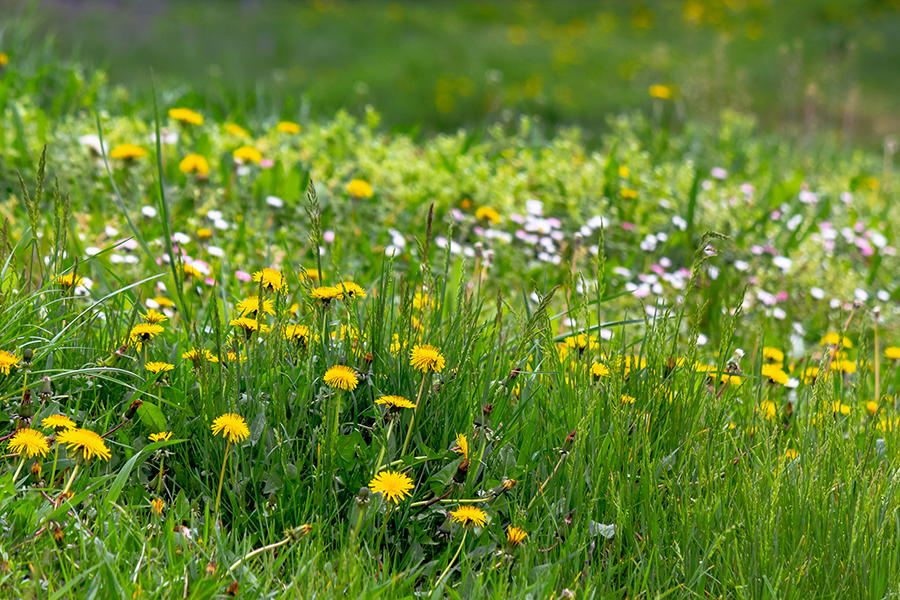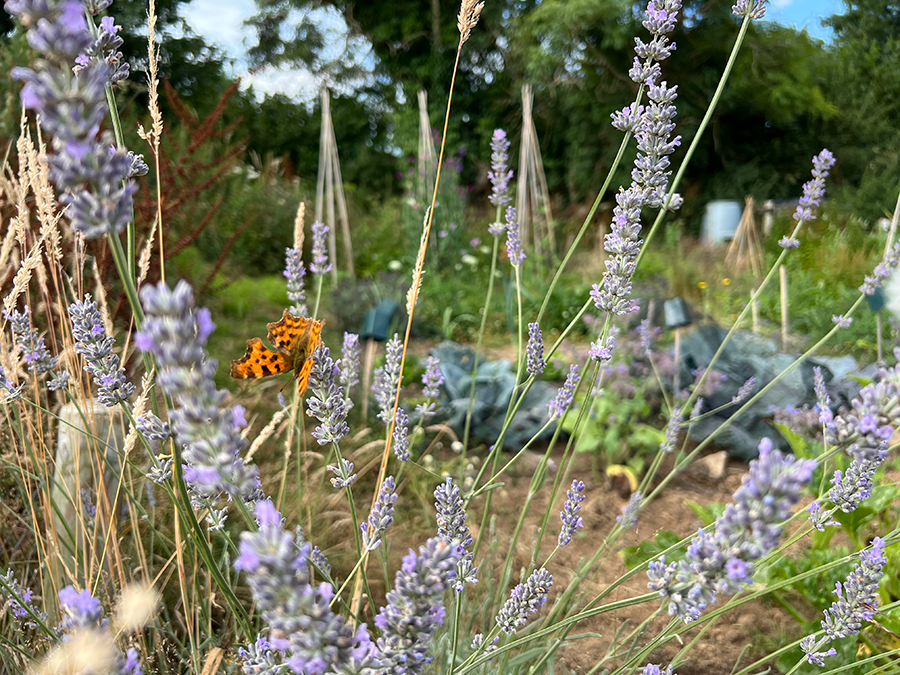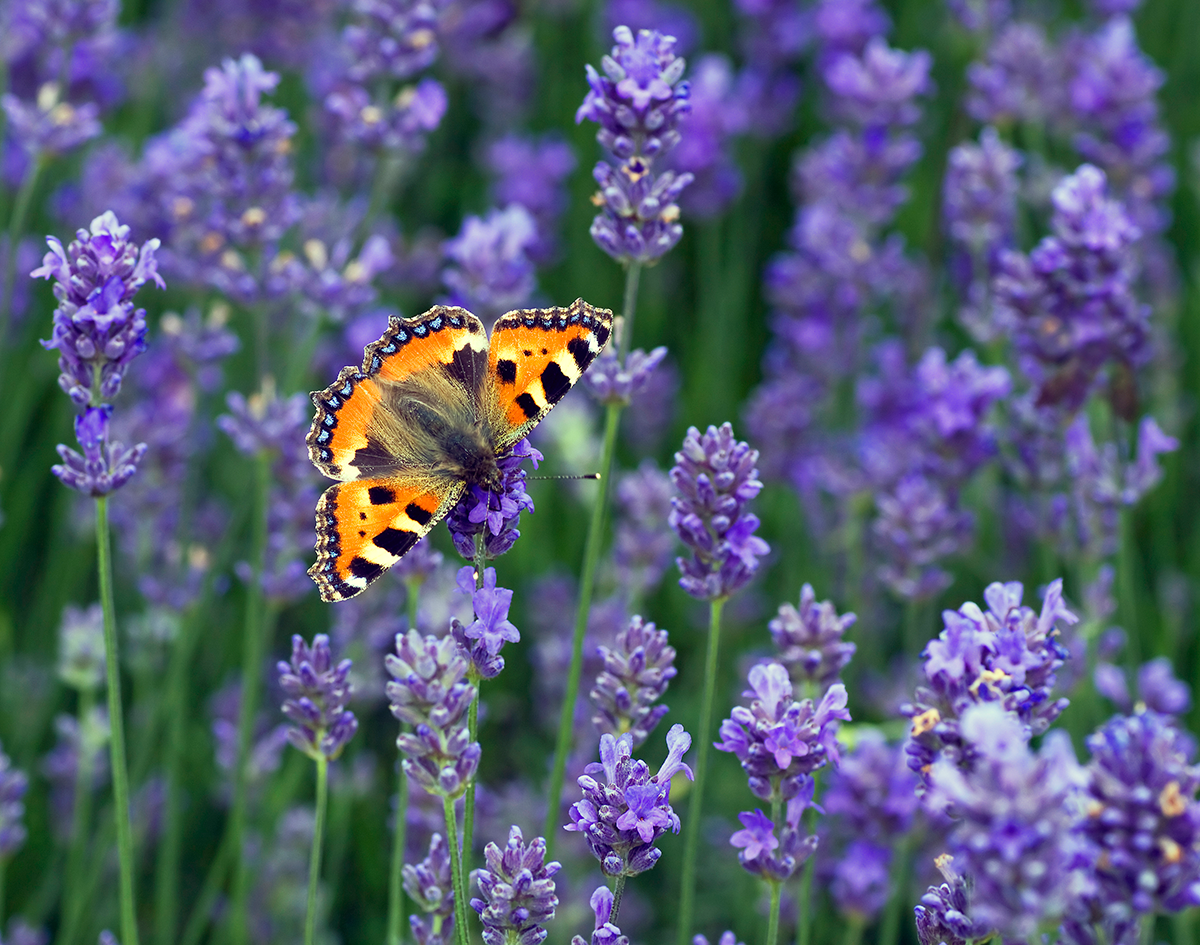With lighter evenings and trees in full blossom, it’s clear that spring has arrived – a perfect reminder to start getting your garden ready for Butterfly Conservation’s Big Butterfly Count.
After the declaration of a Butterfly Emergency last year, it’s more important than ever to create a wildlife-friendly garden. The Big Butterfly Count, running from July 18 to August 10, invites everyone in the UK, from countryside dwellers to city residents, to participate in counting butterflies. Research shows that 80% of butterflies have declined since the 1970s and the Big Butterfly Count is a quick and easy way for people to take action for their survival.
Dr Richard Fox, Head of Science at Butterfly Conservation, said: “Following last summer’s Big Butterfly Count results, which showed a significant decline in the number of butterflies participants observed, we need everyone to get involved this year. Will butterflies bounce back or will their populations continue to decline following a terrible year in 2024? Your counts will help to give us a clear picture and anything you can do to make your garden more butterfly-friendly increases the chances of butterflies surviving, and your chances of seeing them in your garden.”
Creating a garden that supports wildlife doesn’t have to mean a messy, overgrown space. By making mindful choices, you can create a beautiful garden, terrace or balcony, soak up some vitamin D, and make a positive impact on pollinators like butterflies and moths. Here are five simple ways to transform your garden into a wildlife haven:

- Be a grower, not a mower
If you have a lawn consider letting some of it grow wild! Long grass provides a rich habitat for insects and allows some species of butterflies and moths to complete their lifecycle by providing a place to lay eggs and food for caterpillars. It can also allow nectar-rich plants like clover, bluebells, and dandelions to bloom. If you’re not keen on an unmown lawn, consider a more structured approach. Try mowing a curvy path through an area of long grass or sow a mini wildflower meadow to help boost butterfly populations through a designated patch that allows wildlife to flourish. Simple changes can create a vibrant, wildlife-friendly space. - Make your garden a stepping stone for wildlife
Choose plants that attract wildlife and provide nectar and pollen for insects. Plants like buddleia, verbena, lavender, and marjoram provide nectar throughout the butterfly season. Colourful planted pots can look beautiful in patio gardens and on balconies as well as provide a resting place and sustenance for butterflies. With the right plants butterflies might even make your garden their permanent home! - Avoid pesticides and insecticides
While pesticides may target unwanted pests, they also harm beneficial insects like bees, ladybirds, and butterflies. Even “pollinator-friendly” products can contain pesticides, which are toxic to insects. Organic methods such as companion planting are a great alternative. For example, planting basil near tomatoes repels aphids, while nasturtiums attract beneficial insects and deter pests. By carefully selecting plants, you can create a healthy, chemical-free ecosystem in your garden. - Deadhead flowers
By removing dead flowers, you encourage your plants to continue blooming, providing a longer food source for pollinators. Plants like buddleia, lavender, and cosmos benefit from regular deadheading and will keep your garden alive with butterflies through the summer. Plus, spending time outside not only helps nature but helps reduce stress, improve mood, and improve sleep quality! - Avoid peat-based composts
Peat bogs are critical habitats for many native species, including the Large Heath butterfly. The UK’s peat bogs have formed over thousands of years but they aren’t inexhaustible. Peat extraction is a major threat to these delicate ecosystems, so switching to peat-free composts – made from composted bark, coir, or wood fibre – can make a huge difference. If possible, consider making your own compost from vegetable scraps, grass clippings, and coffee grounds for an eco-friendly alternative.

With these simple, thoughtful actions, you can create a beautiful, butterfly-friendly garden that supports wildlife all year round. Whether you’re a seasoned gardener or a beginner, these tips will help you contribute to the well-being of pollinators and enjoy the beauty of butterflies on your own doorstep.
Getting involved in the Big Butterfly Count really is as simple as 1,2,3 following the steps on Butterfly Conservation’s Big Butterfly Count webpage at www.bigbutterflycount.org
- Get ready with the free Big Butterfly Count app or by downloading our butterfly ID chart
- Join in between July 18 and August 10
- Add your counts via the website or app

















